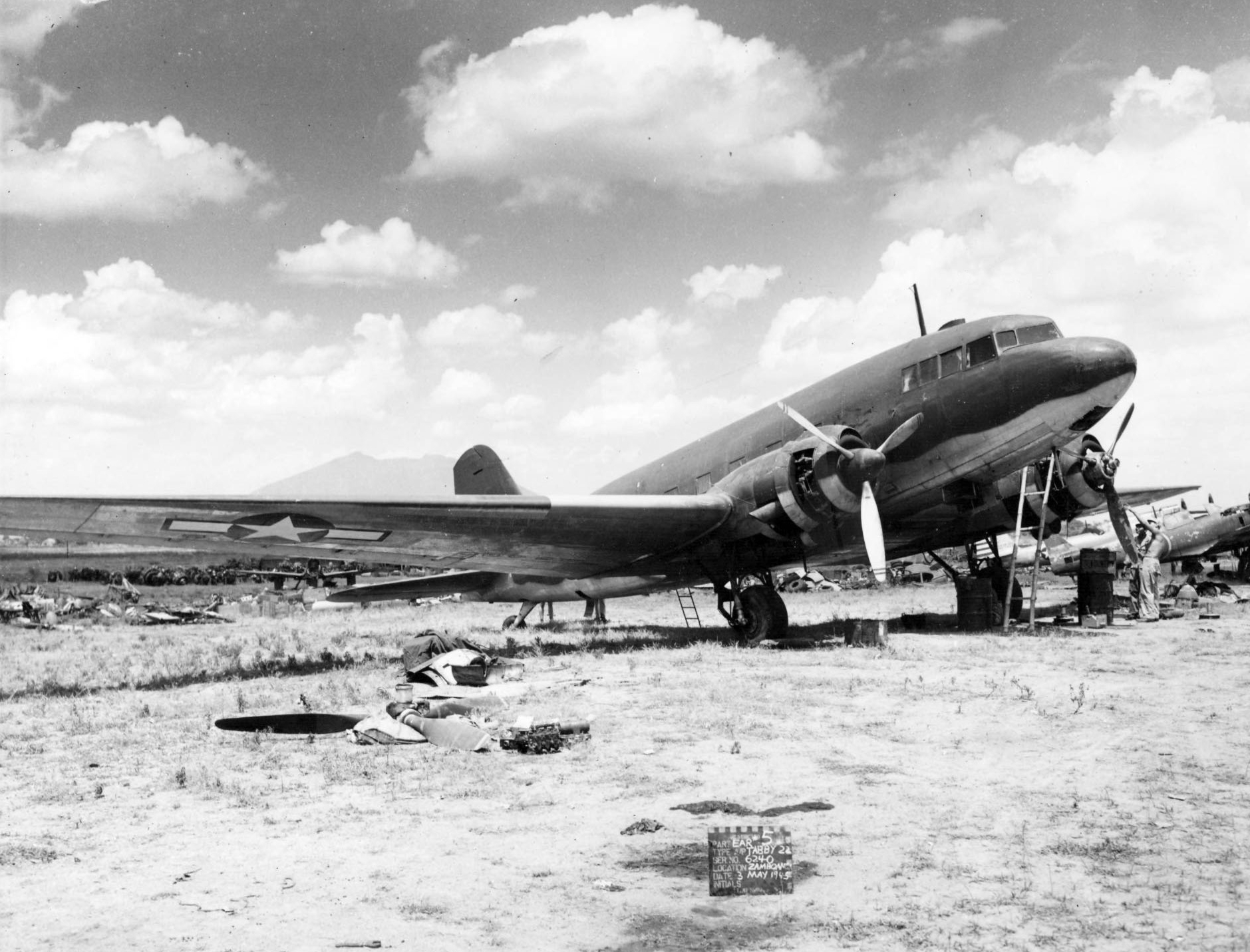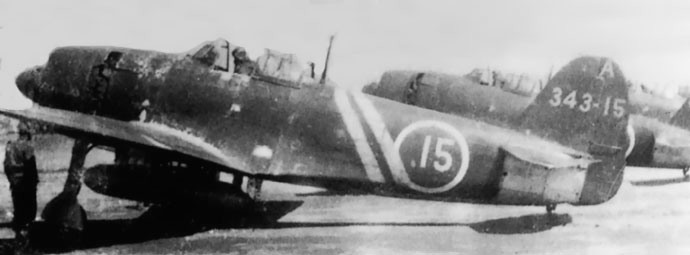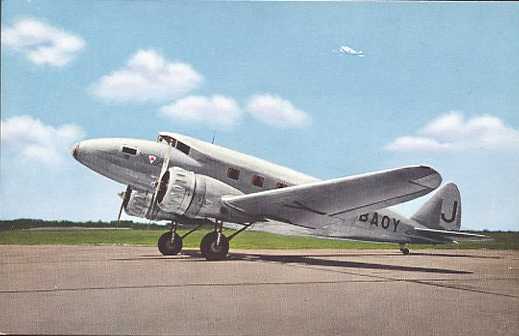|
Nakajima L2D
The Shōwa L2D and Nakajima L2D, given the designations Shōwa Navy Type 0 Transport and Nakajima Navy Type 0 Transport(零式輸送機), were license-built versions of the Douglas DC-3. The L2D series, numerically, was the most important Japanese transport in World War II. The L2D was given the Allied code name Tabby. Design and development After successful license production acquired in 1935 of the earlier Douglas DC-2, Nakajima Hikoki acquired the license rights for $90,000 in February 1938, to build the DC-3.O'Leary, Michael"Douglas Commercial Two."''Air Classics'' magazine, May 2003 (online version at ''www.findarticles.com''). Retrieved: 21 December 2011. Previously, the Great Northern Airways and the Far East Fur Trading Company had purchased 22 DC-3s from 1937–1939. This total consisted of 13 Cyclone powered DC-3s and nine Twin Wasp powered DC-3As, two of which were delivered un-assembled and assigned to a relatively new concern, Shōwa Aircraft. Both Shōwa an ... [...More Info...] [...Related Items...] OR: [Wikipedia] [Google] [Baidu] |
WikiProject Aircraft
A WikiProject, or Wikiproject, is a Wikimedia movement affinity group for contributors with shared goals. WikiProjects are prevalent within the largest wiki, Wikipedia, and exist to varying degrees within sister projects such as Wiktionary, Wikiquote, Wikidata, and Wikisource. They also exist in different languages, and translation of articles is a form of their collaboration. During the COVID-19 pandemic, CBS News noted the role of Wikipedia's WikiProject Medicine in maintaining the accuracy of articles related to the disease. Another WikiProject that has drawn attention is WikiProject Women Scientists, which was profiled by '' Smithsonian'' for its efforts to improve coverage of women scientists which the profile noted had "helped increase the number of female scientists on Wikipedia from around 1,600 to over 5,000". On Wikipedia Some Wikipedia WikiProjects are substantial enough to engage in cooperative activities with outside organizations relevant to the field at issue. For e ... [...More Info...] [...Related Items...] OR: [Wikipedia] [Google] [Baidu] |
Kōkūtai
A ''Kōkūtai'' () was a term used by the Imperial Japanese Navy Air Service (IJNAS) to designate a military aviation unit, similar to the Air Groups in other air arms and services of the time. (''Group'' in the British Royal Air Force, ''Gruppe'' in the German Luftwaffe, ''Groupe'' in the French Armée de l'Air etc.) A Kōkūtai could be based at land or on board aircraft carriers and could contain up to hundreds of men and aircraft. For example, the famous 343 Kōkūtai was a land based fighter group while the 652nd Kōkūtai was a carrier-based bomber group. Kōkūtai were divided into smaller units called Hikōtai, which were the equivalent of a squadron. Kōkūtai were usually divided into three Hikōtai. In general, most pilots and aircrew in the Imperial Japanese Navy Air Service were non-commissioned officers. The word Kōkūtai is abbreviated with the abbreviation "Ku" (空). 343 Ku, for example, stands for 343 Kōkūtai. In the Imperial Japanese Army Air Service (IJAA ... [...More Info...] [...Related Items...] OR: [Wikipedia] [Google] [Baidu] |
Flag Of The Republic Of China-Nanjing (Peace, Anti-Communism, National Construction)
A flag is a piece of fabric (most often rectangular or quadrilateral) with a distinctive design and colours. It is used as a symbol, a signalling device, or for decoration. The term ''flag'' is also used to refer to the graphic design employed, and flags have evolved into a general tool for rudimentary signalling and identification, especially in environments where communication is challenging (such as the maritime environment, where semaphore is used). Many flags fall into groups of similar designs called flag families. The study of flags is known as "vexillology" from the Latin , meaning "flag" or "banner". National flags are patriotic symbols with widely varied interpretations that often include strong military associations because of their original and ongoing use for that purpose. Flags are also used in messaging, advertising, or for decorative purposes. Some military units are called "flags" after their use of flags. A ''flag'' (Arabic: ) is equivalent to a brigad ... [...More Info...] [...Related Items...] OR: [Wikipedia] [Google] [Baidu] |
French Air Force
The French Air and Space Force (AAE) (french: Armée de l'air et de l'espace, ) is the air and space force of the French Armed Forces. It was the first military aviation force in history, formed in 1909 as the , a service arm of the French Army; it became an independent military branch in 1934 as the French Air Force. On 10 September 2020, it assumed its current name, the French Air and Space Force, to reflect an "evolution of its mission" into the area of outer space. The number of aircraft in service with the French Air and Space Force varies depending on the source; the Ministry of Armed Forces gives a figure of 658 aircraft in 2014. According to 2018 data, this figure includes 210 combat aircraft: 115 Dassault Mirage 2000 and 95 Dassault Rafale. As of 2021, the French Air and Space Force employs a total of 40,500 regular personnel, with a reserve element of 5,187 in 2014. The Chief of Staff of the French Air and Space Force (CEMAAE) is a direct subordinate of the Chief of ... [...More Info...] [...Related Items...] OR: [Wikipedia] [Google] [Baidu] |
Imperial Japanese Airways
was the national airline of the Empire of Japan during World War II. History With the start of the Second Sino-Japanese War, there was a tremendous need for air transport capability by the Japanese military, which had traditionally drawn on the resources of the civilian national flag carrier, Japan Air Transport, for its charter requirements. As Japan Air Transport's capacity was limited, conflict arose between the Imperial Japanese Army and Imperial Japanese Navy over priority, and the government saw the need for the creation of a single, national monopoly. The government bought a 50 percent share of Japan Air Transport, and renamed it the ''Dai Nippon Kōkū'' in December 1938. In the late 1930s, Dai Nippon Kōkū operated an extensive international network with a combination of foreign and domestic aircraft. The airline was linked with Manchukuo National Airways for routes in Chosen and Manchukuo, and also had routes in the Japanese occupied portions of mainland China. [...More Info...] [...Related Items...] OR: [Wikipedia] [Google] [Baidu] |
Japan Air Transport
was the national airline of the Empire of Japan from 1928 to 1938. History Commercial aviation began in Japan with the privately held Japan Air Transport Institute, which pioneered passenger service between Sakai, Osaka and Tokushima on Shikoku island on 12 November 1922. Tae Hoon Oum and Chunyan Yu, ''Shaping Air Transport in Asia Pacific'' (Taylor & Francis, 2019) On 30 October 1928, the Japanese government established the Japan Air Transport Corporation (JAT) as the national flag carrier under the Ministry of Communications. JAT absorbed the Japan Air Transport Institute and two other small companies and began scheduled passenger services in 1929. It initially used the Imperial Japanese Army air base at Tachikawa as its terminal in Tokyo. JAT later moved to Haneda Airport, which was completed in August 1931. JAT was heavily subsidized by the Japanese government, receiving the equivalent of $1 billion in today's currency prior to the attack on Pearl Harbor. During the early ... [...More Info...] [...Related Items...] OR: [Wikipedia] [Google] [Baidu] |
Mitsubishi Kinsei
The was a 14-cylinder, air-cooled, twin-row radial aircraft engine developed by Mitsubishi Heavy Industries in Japan in 1934 for the Imperial Japanese Navy. The Mitsubishi model designation for this engine was A8 while it was an experimental project; in service, it was known as the MK8 "Kinsei" by the Navy. In 1941 the engine was adopted by Army, receiving designation Ha-112 (later Ha-112-I, 1,300hp Army Type 1). In May 1943 it received Ha-33 unified designation code. Design and development Early Kinsei models (1 and 2) had A4 internal designation and their cylinder and detail design was based on the single-row, 9-cylinder air-cooled Pratt and Whitney R-1690 Hornet. In 1933 engine underwent a major redesign and redesignated A8. Head layout was reversed to allow exhaust exit to the rear, reducing back-pressure and allowing for a cleaner installation. Compression ratio increased from 5.3:1 to 6.0:1. These changes resulted in a significant performance uplift, compared to pre ... [...More Info...] [...Related Items...] OR: [Wikipedia] [Google] [Baidu] |
Imperial Japanese Navy Air Service
The was the Naval aviation, air arm of the Imperial Japanese Navy (IJN). The organization was responsible for the operation of naval aircraft and the conduct of aerial warfare in the Pacific War. The Japanese military acquired their first aircraft in 1910 and followed the development of air combat during World War I with great interest. They initially procured European aircraft but quickly built their own and launched themselves onto an ambitious aircraft carrier building program. They launched the world's first purpose-built aircraft carrier, , in 1922. Afterwards they embarked on a conversion program of several excess battlecruisers and battleships into aircraft carriers. The IJN Air Service had the mission of national air defence, deep strike, naval warfare, and so forth. It retained this mission to the end. The Pilot training in the Imperial Japanese Navy, Japanese pilot training program was very selective and rigorous, producing a high-quality and long-serving pilot corps ... [...More Info...] [...Related Items...] OR: [Wikipedia] [Google] [Baidu] |
French Indochina
French Indochina (previously spelled as French Indo-China),; vi, Đông Dương thuộc Pháp, , lit. 'East Ocean under French Control; km, ឥណ្ឌូចិនបារាំង, ; th, อินโดจีนฝรั่งเศส, officially known as the Indochinese Union; vi, Liên bang Đông Dương, , lit. 'East Ocean Federation'; km, សហភាពឥណ្ឌូចិន; lo, ສະຫະພາບອິນໂດຈີນ and after 1947 as the Indochinese Federation,; vi, Liên đoàn Đông Dương; km, សហព័ន្ធឥណ្ឌូចិន; lo, ສະຫະພັນອິນດູຈີນ was a grouping of French colonial territories in Southeast Asia until its demise in 1954. It comprised Cambodia, Laos (from 1899), the Chinese territory of Guangzhouwan (from 1898 until 1945), and the Vietnamese regions of Tonkin (French protectorate), Tonkin in the north, Annam (French protectorate), Annam in the centre, and French Cochinchina, Cochinchin ... [...More Info...] [...Related Items...] OR: [Wikipedia] [Google] [Baidu] |
History Of The Armée De L'Air (colonial Presence 1939–1962)
History (derived ) is the systematic study and the documentation of the human activity. The time period of event before the invention of writing systems is considered prehistory. "History" is an umbrella term comprising past events as well as the memory, discovery, collection, organization, presentation, and interpretation of these events. Historians seek knowledge of the past using historical sources such as written documents, oral accounts, art and material artifacts, and ecological markers. History is not complete and still has debatable mysteries. History is also an academic discipline which uses narrative to describe, examine, question, and analyze past events, and investigate their patterns of cause and effect. Historians often debate which narrative best explains an event, as well as the significance of different causes and effects. Historians also debate the nature of history as an end in itself, as well as its usefulness to give perspective on the problems of the p ... [...More Info...] [...Related Items...] OR: [Wikipedia] [Google] [Baidu] |
China National Aviation Corporation
The China National Aviation Corporation () was a Chinese airline which was nationalized after the Chinese Communist Party took control in 1949, and merged into the People's Aviation Company of China () in 1952. It was a major airline under the Nationalist government of China. It was headquartered in Shanghai as of 1938. History On 5 April 1929 the Executive Yuan of the Nationalist government of China based in Nanking established the Chinese National Aviation Corporation, a state owned company with an authorized capital of ten million yuan. Sun Fo, Minister of Railways and son of Sun Yat Sen served as its first chairman although the real power lay with the Minister of Communications, Wang Boqun. Two weeks later on 17 April, the Nationalists entered into a service contract with an American firm, Aviation Exploration Inc which was to establish air routes between a few of the major treaty ports and manage all operations. Aviation Exploration Inc was a personal holding company ... [...More Info...] [...Related Items...] OR: [Wikipedia] [Google] [Baidu] |
Sukarno
Sukarno). (; born Koesno Sosrodihardjo, ; 6 June 1901 – 21 June 1970) was an Indonesian statesman, orator, revolutionary, and nationalist who was the first president of Indonesia, serving from 1945 to 1967. Sukarno was the leader of the Indonesian struggle for independence from the Dutch colonialists. He was a prominent leader of Indonesia's nationalist movement during the colonial period and spent over a decade under Dutch detention until released by the invading Japanese forces in World War II. Sukarno and his fellow nationalists collaborated to garner support for the Japanese war effort from the population, in exchange for Japanese aid in spreading nationalist ideas. Upon Japanese surrender, Sukarno and Mohammad Hatta declared Indonesian independence on 17 August 1945, and Sukarno was appointed president. He led the Indonesian resistance to Dutch re-colonisation efforts via diplomatic and military means until the Dutch recognition of Indonesian independence ... [...More Info...] [...Related Items...] OR: [Wikipedia] [Google] [Baidu] |





.jpg)
